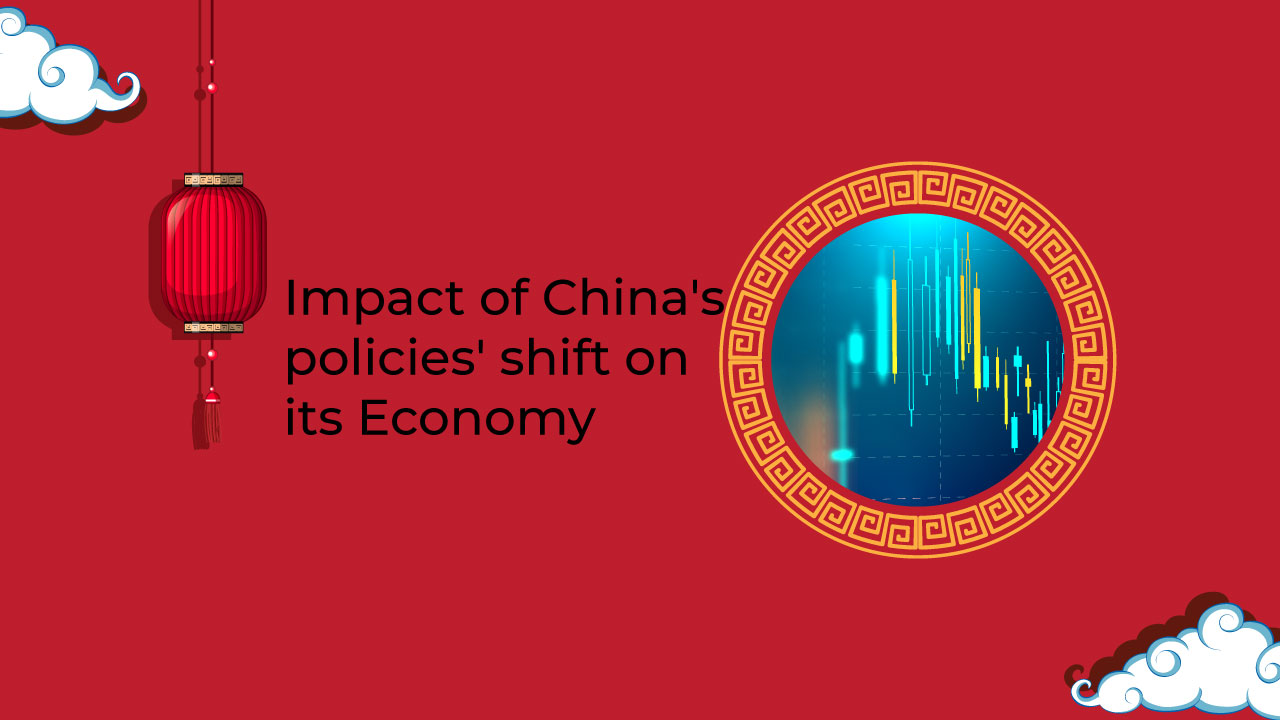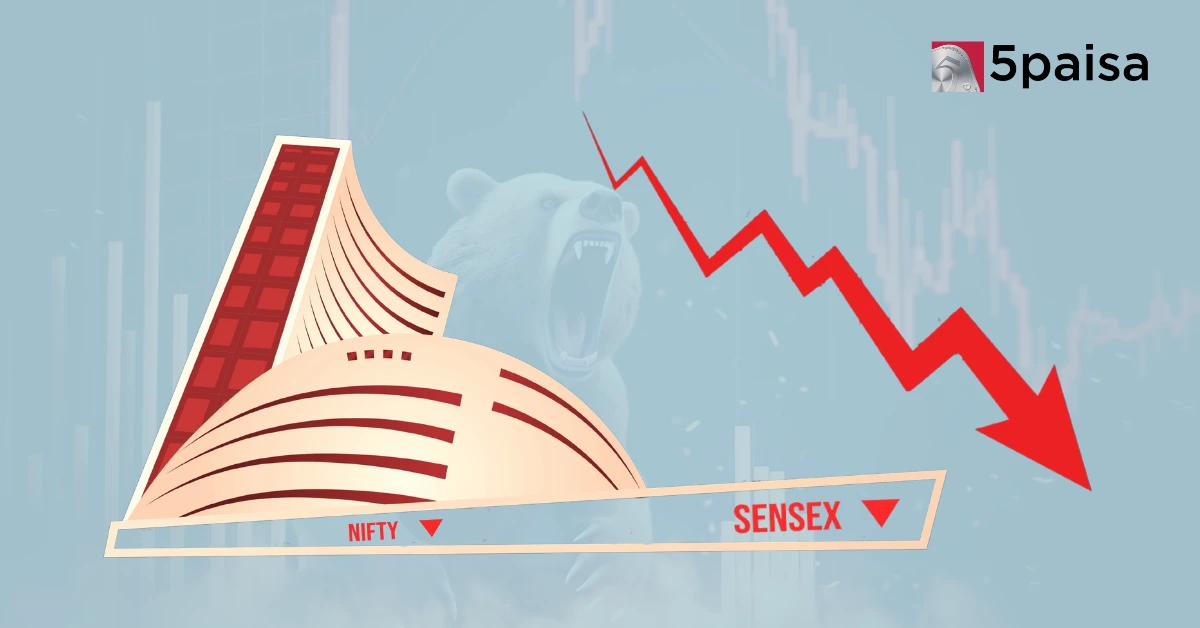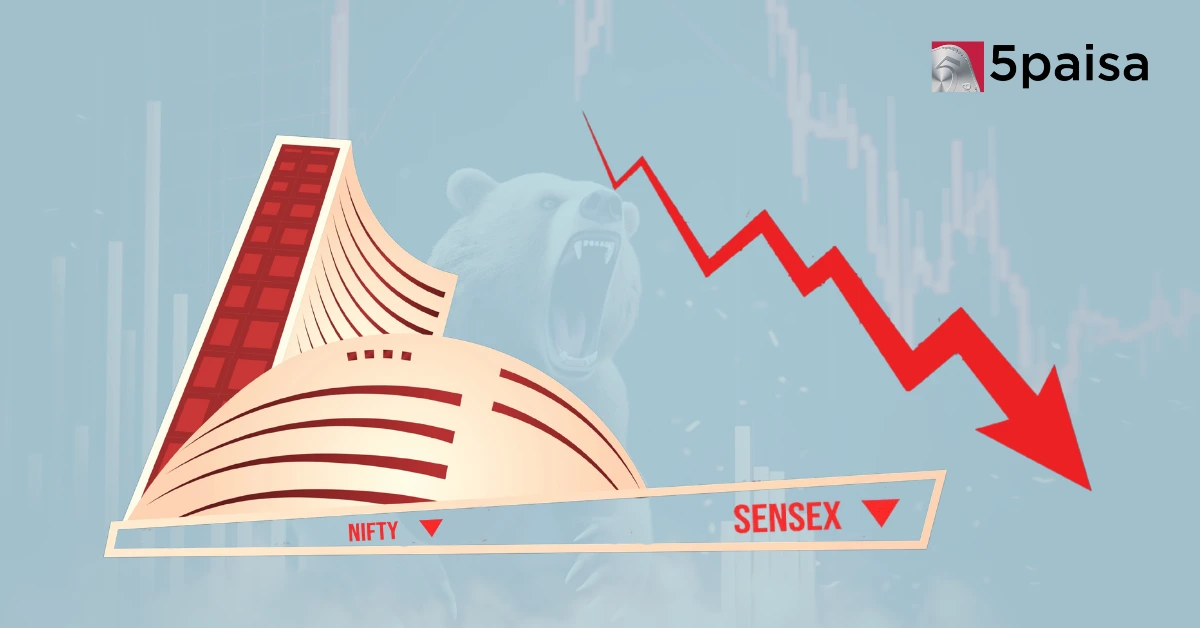Sensex & Nifty Live Updates April 25: Nifty50 Slips Below 23,850, Recovers to 24,045
Impact of China's policies' shift on the Chinese Economy

With increasing uncertainties and new downward pressure, China is facing significant risks and challenges both nationally and globally. The 5.5% growth target for 2022 is the lowest official target for the economy in decades. The economy sharply declined in the Q4FY2021 under “triple pressure”—shrinking demand, supply shocks, and weakening sentiment—as well as a regulatory crackdown in the property and technology sectors. It is expected that the Chinese economy will bottom in the first quarter and be set to recover over the rest of 2022. As the industrial cycle troughs, improvement should become more obvious starting in the second quarter. The import and Purchasing Managers Index (PMI) numbers are likely to recover, making a mid-year recovery a possibility.
In contrast to high consumer and producer prices around the world, inflation in China is relatively subdued. At the Two Sessions, the consumer inflation target was set at 3%, unchanged from last year, when consumer prices rose 0.9% for 2021 and consumption during the Chinese New Year remained well below pre-pandemic levels. This gives the People’s Bank of China (PBOC) a large monetary policy toolbox, and the central bank is likely to continue to ease following its cuts to loan prime rates and the reserve requirement ratio early in the year. This runs opposite to the hawkish stance and monetary tightening of other major economies like the US and European countries that are struggling with high inflation. Despite the push to improve the Chinese economy with credit supply, financing available to the real economy remained tight and could take more time to reverse. Policy rate cuts are not as effective as they have been in the past, perhaps because of the resistance on shadow banking back in 2017-2019. The other side of increasing risks and markets is that credit markets may be less moving, leaving the increased liquidity trapped in financial markets longer and not reaching the real economy right away. Even with signs that money and credit growth are starting to pick up, the economic growth will struggle to lift off in the first half of the current year.
Policymakers are looking towards a step up fiscal spending. Despite slower growth in fiscal revenue, the target for budget spending goes up by 8.4% Y-o-Y, much higher than the 1.8% target in 2021. Some of the spendings will directly boost domestic demand through large-scale subsidies, with the aim of the long-term goal of moving towards a services-based economic model. A series of relief measures from tax exemptions to credit facilities are being offered to the service industry and small businesses that have been hit hard by the pandemic lockdowns and restrictions. Many infrastructure projects in transportation, logistics, and telecommunications as well as advanced manufacturing and technology are being fast-tracked, offering cash-strapped local governments larger funding transfers from the central government. Local infrastructure projects in Shanghai, Sichuan, Jiangsu, Zhejiang, Anhui, and Hebei have been pushed forward and financed by the new local government special-purpose bond issuance. The capital for local bonds to fund infrastructure projects is set at 3.65 trillion yuan—about the same level as last year.
The pro-growth measures are among the several reasons to be positive about Chinese equity markets. The policy was key to last year’s equity selloffs—and could be key to turning the market around this year. Recent regulatory probes on technology and healthcare companies are mostly extensions and implementations of last year’s edict.
In many ways, the Chinese market is more policy-driven than economy-driven. The potential US delistings of Chinese technology companies added to regulatory concerns and helped set off broad declines in an already shaken market. The US Securities and Exchange Commission (SEC) added five Chinese American Depositary Receipts (ADRs) to a provisional list that might face the risk of delisting by 2024 if they failed to submit audit working papers for review. Under new US regulations, all foreign US-listed companies must allow US authorities to access their audit records or face delisting after two to three years of noncompliance. However, Chinese companies are prohibited from providing access without Beijing’s permission. Currently, the US and China are actively working to resolve this current dispute, and they could reach an agreement on auditing disclosures within the coming year. While the US-China rivalry is not going to fade away, a complete decoupling between the two countries is unlikely to happen as they are economically and financially interlinked. There are low chances that all Chinese companies will be delisted from US exchanges.
Even if the two parties cannot come to an agreement, many major Chinese companies with ADRs have already opted for a secondary or dual listing in Hong Kong, in addition to their ADRs in the US. This will benefit Hong Kong in terms of increased flows. Hong Kong-listed shares and listed ADRs are fungible and can be freely converted in both directions with low conversion costs. In this case, the delisting threat is a manageable risk.
The Chinese government’s commitment to transitioning to a more domestic, service-oriented growth trajectory, increasing spending on healthcare, automation, and digitization, and the move towards green energy and a cleaner environment. These, coupled with the continued relative underinvestment by international investors and the opening of Chinese capital markets, should provide opportunities for the active investor.
China’s monetary and fiscal policy shift promising, more supportive measures are still needed to stabilize and drive a recovery in the beleaguered property sector. Home sales among the 100 largest property developers in the first two months of the year plunged 43% from a year earlier. The rapid decline in housing prices finally decelerated in January after being in negative territory for months, but the average 70-city property prices have not looked up. Top-tier cities are experiencing some price recovery, though lower-tier cities are likely still vulnerable to more declines. Construction starts have not picked up, partly hampered by local Omicron resurgences. Several lower-tier city governments relaxed down payment requirements or lowered mortgage rates—and we expect more cities to follow suit— but home sales demand has yet to recover. The increased number of COVID cases in China and the resultant lockdowns of several cities are also hampering home sales recovery.
On the other hand, the rules governing escrow accounts (trusts holding pre-completion cash) are to be eased. This would provide much-needed liquidity to property developers after last year’s cash crunch and indiscriminate write-offs. State-owned enterprises (SOEs) are playing a greater role, moving in to carry out M&A activities by acquiring projects or other assets from distressed developers. On a local level, regulators have been rolling out easing policies in a number of provinces and cities to provide relief for developers, e.g. easing regulations on property sales or land banks.
Investing in China is complex. For those investors who want to take a balanced approach, the capital allocation between the onshore and offshore assets can allow investors to benefit from different catalysts and the difference in investor behavior. Chinese stocks are relatively volatile, and there is also limited diversification benefit between Chinese bonds and equities. Hence, dynamically moving in and out of risk assets in different market environments may help to achieve better risk-adjusted returns.
- Performance Analysis
- Nifty Predictions
- Market Trends
- Insights on Market
Trending on 5paisa
Market Outlook Related Articles
Disclaimer: Investment in securities market are subject to market risks, read all the related documents carefully before investing. For detailed disclaimer please Click here.

 5paisa Research Team
5paisa Research Team
 Sachin Gupta
Sachin Gupta




